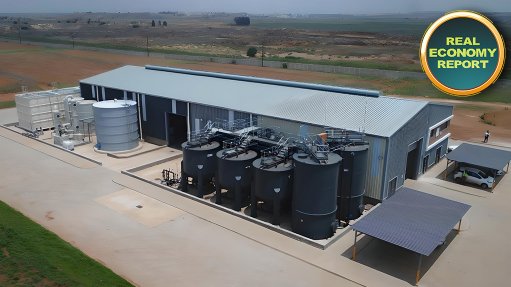Into the future
If one considers the way things have progressed, we are now in 2022, which is 100 years later than 1922. Looking back to 1922, a great number of things had changed from the beginning to that century until that time. Motor cars had gone from being fairly slow devices with no cabin (and in Britain the requirement of a person walking in front of the vehicle) to vehicles which could go quite long distances and which resembled, to some large extent, the layout of the vehicles we use today.
In addition, aircraft had developed from the Wright brothers (first successful flight about 55 m) to twin-engine aeroplanes.
There were many other developments by 1922; for example, communications and radio. It is worth knowing that the development of radio transmission on an extended scale began in about 1922. You get the idea? The point is, over a fairly short period (1900 to 1922), there had been a great deal of change and development. From 1922 to 2000, there was equally a great deal of development. Some of it was quicker (owing to the effect of wars) and some of it not so quick. However, one development just has not been very fast, and that’s the electrical system, which has not developed on a fundamental basis to any large degree from 1922 until today.
There are people who will say I am completely wrong in saying this and they will point out electrical developments of an extended nature. However, I am talking about basic electrical development, as in the form of power lines and insulators and transformers. It is a fact that modern transformers are far more efficient than transformers of 1922, and it’s also a fact that circuit breakers are far better in operation than circuit breakers of 1922. The fact, however, is that transformers and circuit breakers and power lines are still pretty much the same as they were in 1922.
It is probably time for a fundamental change in the whole power distribution system. It’s not that the current power distribution system doesn’t work – it’s just that the current power distribution system is in many ways (especially as far as distribution to domestic and similar systems is concerned) very antiquated, if we compare the options that we have. One option which hasn’t really been explored (as far as I know) is the distribution of power using dc rather than ac. The use of dc power was suggested by Thomas Edison. He believed that dc power transmission had many advantages. Others, such as Nikola Tesla, had no faith in dc transmission (this is probably why he and Edison parted ways) and believed in ac just because you could step up and step down far more simply in ac than you could in dc. Tesla used this principle in the transmission from Niagara Falls to a nearby town and it grew from there.
The benefit of dc transmission is that it generally can be achieved by using a single live wire and an earth return. There are several other advantages which would greatly assist power transmission, compared with the ac power we use today.
The items that prevented the use of dc transmission in the past, such as conversion of low to high voltage, can now be overcome in simple and achievable ways. To anybody who does not fully understand what is being implied, we can put it this way: it is possible to supply power to 1 000 houses effectively using a quarter of the number of wires required for ac transmission. The conversion to dc is not a matter of if, but when. South Africans will have noticed, over the past ten years, the disappearance of many cables, which are used to connect telecom systems together. In the same way, we will see, probably not within my lifetime, the eventual disappearance of ac transmission systems for rural and domestic distribution. This will make things simpler and, above all, make the whole area neater as overhead cables are replaced by smaller, thinner connection systems.
Where will we be 100 years from now?
Comments
Press Office
Announcements
What's On
Subscribe to improve your user experience...
Option 1 (equivalent of R125 a month):
Receive a weekly copy of Creamer Media's Engineering News & Mining Weekly magazine
(print copy for those in South Africa and e-magazine for those outside of South Africa)
Receive daily email newsletters
Access to full search results
Access archive of magazine back copies
Access to Projects in Progress
Access to ONE Research Report of your choice in PDF format
Option 2 (equivalent of R375 a month):
All benefits from Option 1
PLUS
Access to Creamer Media's Research Channel Africa for ALL Research Reports, in PDF format, on various industrial and mining sectors
including Electricity; Water; Energy Transition; Hydrogen; Roads, Rail and Ports; Coal; Gold; Platinum; Battery Metals; etc.
Already a subscriber?
Forgotten your password?
Receive weekly copy of Creamer Media's Engineering News & Mining Weekly magazine (print copy for those in South Africa and e-magazine for those outside of South Africa)
➕
Recieve daily email newsletters
➕
Access to full search results
➕
Access archive of magazine back copies
➕
Access to Projects in Progress
➕
Access to ONE Research Report of your choice in PDF format
RESEARCH CHANNEL AFRICA
R4500 (equivalent of R375 a month)
SUBSCRIBEAll benefits from Option 1
➕
Access to Creamer Media's Research Channel Africa for ALL Research Reports on various industrial and mining sectors, in PDF format, including on:
Electricity
➕
Water
➕
Energy Transition
➕
Hydrogen
➕
Roads, Rail and Ports
➕
Coal
➕
Gold
➕
Platinum
➕
Battery Metals
➕
etc.
Receive all benefits from Option 1 or Option 2 delivered to numerous people at your company
➕
Multiple User names and Passwords for simultaneous log-ins
➕
Intranet integration access to all in your organisation


















